Everything but the oink.
It’s said that you can cook and eat every part of the pig, and thrifty folks have been making the most of their hogs since they started eating them.
But in our modern age, we are more likely to see our meat pre-cut and pre-packaged, often with no indication of what part of the animal it came from.
But when you buy a whole hog, you have little choice but to break everything down and see where it’s coming from yourself.
In this article, I’m going to take a look at the “primals,” or large cuts that pigs are generally cut into. While these pieces are rarely cooked whole as-is, they are used to more easily handle and transport the animal before cutting into more manageable pieces.
I should add before getting into this that there are many different ways of butchering a hog, and there is some technical jargon that is traditionally used as well.
While not all pigs will be cut up into the exact same primals as this, there is still enough similarity to help you understand where your meat is coming from, or help you to process your own pig primals.
Additionally, I’d like to apologize to any butchers reading this. I’m going to drop some of the traditional jargon, because I think it can be confusing at times, particularly when primals and smaller cuts can often have the same name.
That being said, let’s get going on learning about your pork!
1. Front Leg
The front leg primal comes from the front limbs of the hog (obviously), and contains one of the most prized cuts in the entire pig.
The Boston butt is the uppermost cut, and consists of the part of the hog that we would consider to be the shoulder. This large cut contains the “ideal” ratio of 70% meat / 30% fat that is required for sausages and other pork products, and as a result is one of the most “in-demand” cuts, but is also ideal for pulled pork.
Lower on this primal is the picnic ham, which consists of the upper leg of the hog. This is a much less popular cut, but can be used for most of the same purposes as the Boston butt.
Even lower is the hock, which is the foreleg. This tough cut is often brined, smoked, and added to slow-cooked soups and stews for flavor.
Lastly is the trotter, which is simply a pig’s foot. This cut contains a ton of bones and connective tissue, and is generally used to add gelatin to stocks or pickled.
2. Hind Leg
The hind leg contains one of the most popular cuts for curing and smoking: the ham.
The ham proper contains the leg and all surrounding muscles. The most popular way of preparing this cut is the well-known preparation of long curing followed by smoking over low heat.
This primal also contains a hock and trotter, which are used as mentioned above as with those found on the front legs.
3. Midsection
The midsection is the largest of the main primal cuts, and is the hardest to deal with due to the large number of bones and resulting need for sawing.
This cut is almost always broken down into three smaller sub-primal cuts, from top to bottom:
- The loin, which runs along the spine.
- The ribs, which consist of, well, the ribs.
- The belly. Okay, I think you got it.
Going from the front of the loin to the back, the first third comes from above the shoulder and is best used by deboning and grinding for sausage or rillettes.
The middle third contains the upper part of the ribs and is best cut up into bone-in chops.
The rear third comes from above the rear legs, and is best deboned and cut up into boneless chops.
The inner part of the loin also contains the tenderloin, a long and lean muscle that should be roasted or grilled.
Lastly, there should be plenty of easy-to-remove fat along the inside of the rear of the loin. This fat, known as leaf lard, is ideally rendered and used in baking.
The ribs, obviously, are best barbecued. They can be cut up in different ways, and the cartilaginous spare ribs on the bottom are often separated and cooked separately.
Lastly, the belly is best known as its cured and smoked product: bacon!
Head
Ah, the head.
If there’s one thing that will make the modern American reader queasy in the stomach about buying and cooking an entire pig, it’s the head.
There’s no way to fool yourself that your food comes as the result of the death of another animal than having a huge pig’s head on hand.
But rather than being a sadistic cut that only the Hannibal Lecters of the world would enjoy, the head contains some of the tastiest meat on the hog, and people across all cultures have found ways of eating the often-difficult-to-get-at meat from the skull.
Headcheese is perhaps the most obvious preparation, but the head can also be roasted, used for curing, or many other methods.
Organs, Fat, and Skin, Oh My!
While technically not considered primal cuts, you can’t forget all the miscellaneous goodies you get from a hog as well:
- Organs–the liver, heart, and intestines tend to be tender and tasty, and are generally the part of the animal that wild carnivores eat first.
- Fat–Pig fat has, until recently, been lauded as one of nature’s most perfectest and versatile foodstuffs. Fortunately, a lot of good fat for flavor, cooking, and preserving can be found in the typical hog.
- Skin–Most people will eat chicken skin with no thought, but are horrified by the thought of eating pig skin. You realize that this is what pork rinds are made of, right?
From Primals to Cuts
This article explained the four basic primal cuts of hog in general.
In the next few posts, we’ll take a closer look at all these primal cuts, and I’ll show you how they are butchered further into the smaller cuts that we are used to seeing at the supermarket and cooking up in the kitchen.
I’ll show you how to butcher these primals for if you want to buy your own whole pig, or even if you are just interested to see where your pork comes from!
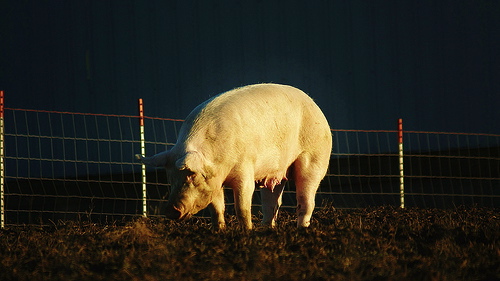
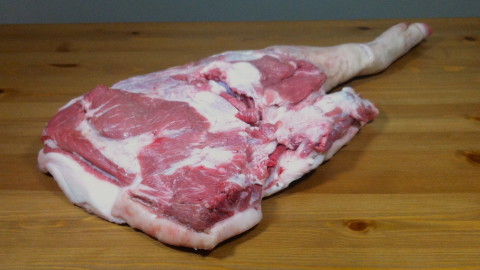
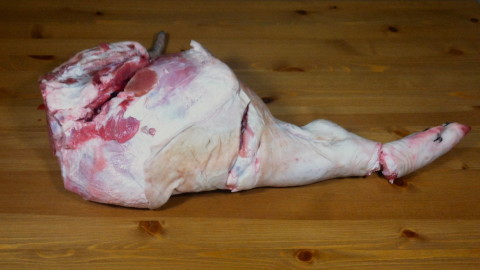
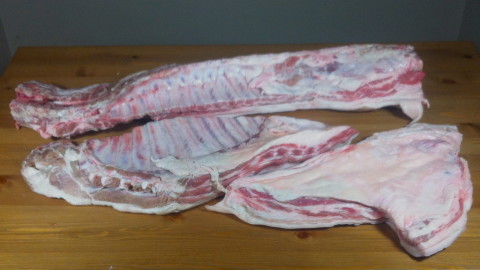
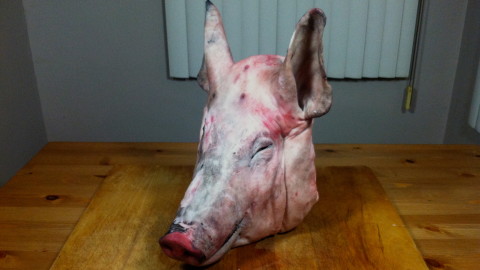
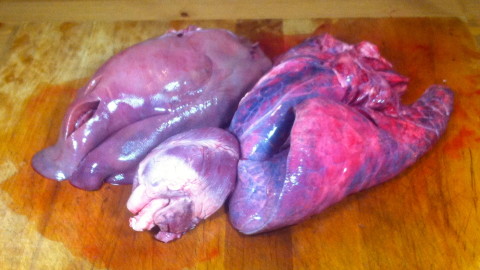
 I'm a science geek, food lover, and wannabe surfer.
I'm a science geek, food lover, and wannabe surfer.
Comments on this entry are closed.